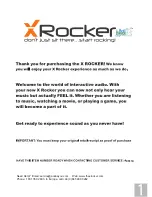
15
Dymax UVCS 2.0 Light-Curing Conveyor User Guide
7.
Apply some adhesive to both ends of the Fiberglass Rod to prevent it from moving during Conveyor
operation (Figure 23).
Figure 20. Spliced End of Belt
Figure 21. Fiberglass Rod
Figure 22. Replacing Belt
Figure 23. Applying Adhesive
8.
Equally tighten the Belt-Tension Knobs (Figure 16) on both sides of the conveyor to remove excess
slack from the Belt. Enough tension should be applied on the Belt so that the Belt can only be moved
across the two Rollers by moderate hand pressure when the Conveyor is not running.
CAUTION!
Excessive tightening of the Belt will result in early Belt failure. Since the two Conveyor
Rollers have a crown in the middle, only minimum tightening is necessary.
9.
Start the Conveyor and adjust the Belt-Tensioning Knobs (Figure 16) until the Belt runs in the center
of the loading end of the Conveyor. There should be enough tension on the Belt so that the Belt does
not slip on the rollers, but loose enough so that it can be stopped by moderate hand pressure when
the Conveyor is running. If stopping the Belt stalls the Conveyor Motor, the Belt is too tight and must
be loosened.
10.
Monitor the tracking of the Belt as the conveyor operates and use the Belt-Tensioning Knobs (Figure
16) to make fine adjustments. To adjust tracking, simply tighten the side to which the Belt is tracking.
11.
Reinstall the Pinch Guards on both ends of the Conveyor. This step is critical to Belt-Speed Sensor
operation. The Pinch Guard on the Unloading End of the Conveyor contains a Shield for the Sensor to
prevent damage if the Belt contacts it while operating.










































